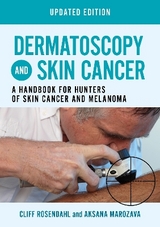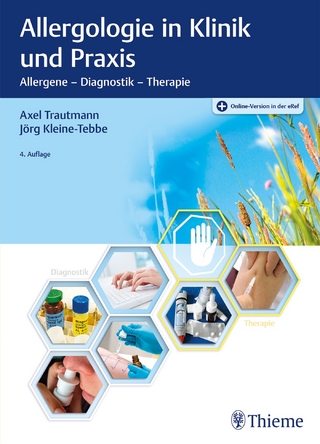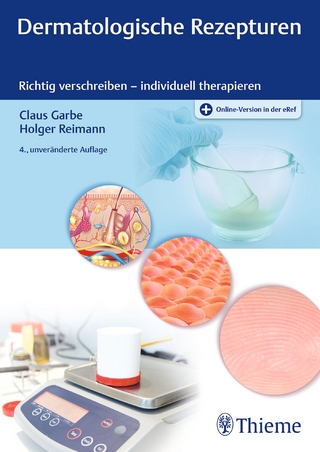
Dermatoscopy and Skin Cancer
Scion Publishing Ltd (Verlag)
978-1-911510-33-8 (ISBN)
- Titel erscheint in neuer Auflage
- Artikel merken
differentiate between benign and malignant tumours.
With over 450 high quality images and two easy to follow algorithms, readers will be able to confidently diagnose skin lesions early and with great precision.
Dermatoscopy and Skin Cancer is a handbook to help dermatologists, dermatoscopists and GPs easily differentiate between benign and malignant tumours, leading to fewer unnecessary biopsies and earlier treatment of cancers.
Based around two easy to follow algorithms, Chaos and Clues and Prediction without Pigment, the book shows all dermatoscope users how to confidently diagnose skin lesions earlier and with greater precision.
In addition, this handbook also provides coverage of:
the microanatomy of the skin
specimen processing and histopathology
the language of dermatoscopy to help name and define structures and patterns
approaches to skin examination and photodocumentation
revised pattern analysis as an additional diagnostic algorithm
dermatoscopic features of common and significant lesions.
Using over 450 high quality images the authors provide a detailed algorithmic approach to assessing the skin; an approach that has been successfully taught to thousands of doctors around the world.
Chapter 1: Introduction to dermatoscopy
1.1 Why use a dermatoscope?
1.2 What is a dermatoscope?
1.3 Colours in dermatoscopy
1.4 Differences between polarised and non-polarised dermatoscopy
1.5 Uses of dermatoscopy for conditions other than tumours
Chapter 2: Skin – the organ
2.1 Skin as an organ
2.2 Embryology of skin
2.3 The microanatomy of skin
Chapter 3: Dermatopathology for dermatoscopists
3.1 From the scalpel to the microscope
3.2 The histology of normal skin
3.3 Terminology used in dermatopathology
3.4 Dermatoscopic histological correlation of neoplastic lesions
Chapter 4: The language of dermatoscopy: naming and defining structures and patterns
4.1 The evolution of metaphoric terminology for dermatoscopic structures and patterns
4.2 Revised pattern analysis of lesions pigmented by melanin
4.3 Patterns in revised pattern analysis
4.4 The process of revised pattern analysis
4.5 Revised pattern analysis applied to lesions with white structures
4.6 Revised pattern analysis applied to lesions with orange, yellow and skin-coloured structures
4.7 Revised pattern analysis applied to vessel structures and patterns
4.8 The cognition of dermatoscopy
Chapter 5: The skin examination
5.1 The skin check consultation
5.2 Photo-documentation
5.3 Patient safety: tracking specimens and self-audit
5.4 The lives of lesions
Chapter 6: Chaos and clues: a decision algorithm for pigmented lesions
6.1 Chaos and clues
6.2 Chaos
6.3 Clues
6.4 Exceptions
6.5 Excluding unequivocal seborrhoeic keratoses from biopsy
Chapter 7: Prediction without pigment: a decision algorithm for non-pigmented skin lesions
7.1 Prediction without pigment
7.2 Prediction without pigment: short version
7.3 Conclusion
Chapter 8: Pattern analysis
8.1 Revised pattern analysis – a diagnostic algorithm
8.2 An aide-memoire for revised pattern analysis of pigmented skin lesions
8.3 Applying the aide-memoire in practice
Chapter 9: Dermatoscopic features of common and significant lesions: pigmented and non-pigmented
9.1 Melanoma: pigmented and non-pigmented
9.2 Melanocytic naevi: pigmented and non-pigmented
9.3 Basal cell carcinoma: pigmented and non-pigmented
9.4 Benign keratinocytic lesions
9.5 Actinic keratosis, squamous cell carcinoma in situ and squamous cell carcinoma
9.6 Dermatofibroma and dermatofibrosarcoma protuberans
9.7 Haemangioma and other vascular lesions
9.8 Merkel cell carcinoma
9.9 Atypical fibroxanthoma
9.10 Adnexal tumours
9.11 Neurofibroma
9.12 Molluscum contagiosum
9.13 Cutaneous lymphoma
9.14 Kaposi sarcoma
Index
| Erscheinungsdatum | 10.05.2021 |
|---|---|
| Verlagsort | Bloxham |
| Sprache | englisch |
| Maße | 172 x 244 mm |
| Gewicht | 975 g |
| Themenwelt | Medizin / Pharmazie ► Medizinische Fachgebiete ► Dermatologie |
| Medizin / Pharmazie ► Medizinische Fachgebiete ► Onkologie | |
| Medizin / Pharmazie ► Medizinische Fachgebiete ► Radiologie / Bildgebende Verfahren | |
| ISBN-10 | 1-911510-33-9 / 1911510339 |
| ISBN-13 | 978-1-911510-33-8 / 9781911510338 |
| Zustand | Neuware |
| Haben Sie eine Frage zum Produkt? |
aus dem Bereich



